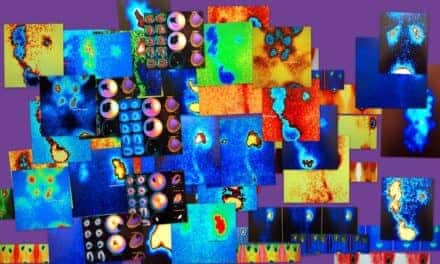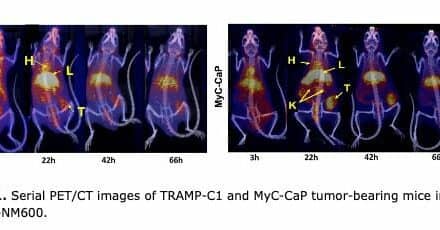The Medical Imaging & Technology Alliance (MITA), along with the Council on Radionuclides and Radiopharmaceuticals, Inc. (CORAR) and the Society of Nuclear Medicine & Molecular Imaging (SNMMI), hosted a virtual briefing for Capitol Hill staff on Wednesday, September 16, with leading physicians to discuss the extraordinary and growing impact of PET and nuclear medicine in cancer treatment, as well as the importance of expanding patient access to these drugs through passage of the Medicare Diagnostic Radiopharmaceutical Payment Equity Act of 2019 (H.R. 3772).
The briefing included presentations from Dr. Dave Mankoff, Gerd Muehllehner Professor of Radiology and Vice-Chair for Research of Radiology at the University of Pennsylvania’s Perelman School of Medicine, and Dr. Michael Roarke, Chair of the Division of Nuclear Medicine for the Mayo Clinic Arizona Department of Radiology and Medical Director at the Mayo Clinic’s Arizona Cyclotron Facility. The event also featured John D. (full name cannot be disclosed for privacy reasons), a prostate cancer patient who provided insights into his experience with nuclear medicine and its important impact on his treatment pathway.
Congressman Greg Murphy, M.D. (NC-3)—one of the cosponsors of H.R. 3772—led off the briefing and noted: “Nuclear medicine is already playing a growing role in diagnosing advanced disease, including prostate and breast cancer. Passage of H.R. 3772 will give patients and their physicians the tools they need to diagnose life-threatening diseases early, when they are most treatable– a key improvement that will reduce downstream costs and, more importantly, save lives.”
Following the Congressman’s remarks, patient John D. shared his personal experience with nuclear medicine and the positive difference it made in his fight against prostate cancer: “When my Prostate-Specific Antigen (PSA) levels spiked, I assumed the worst, but thought it was best to know the truth as quickly as possible. Reviewing my PET scan with my doctor, I worried that cancer would be everywhere, but in fact, there was only a single small spot of red– no bigger than a penny, indicating my cancer. Twenty-one days later, I went in for radiation therapy and the results from the PET scan allowed doctors to target the precise spot. In the months following, my PSA levels dropped significantly. My PET scan not only guided my treatment but helped alleviate my anxiety. Without that information to guide my treatment, I’m not sure where I’d be.”
After John offered his perspective as a cancer patient, Dr. Michael Roarke drew on his more than 24 years of experience in nuclear medicine to provide an overview of PET technology and its growing influence on the clinical mainstream. “The impact of this powerful diagnostic tool on patient care and the field of cancer treatment is truly extraordinary,” notes Roarke. “Expanding access to the most advanced and effective PET radiopharmaceuticals would strengthen America’s healthcare system and enhance our ability to diagnose advanced illnesses earlier and with greater accuracy.”
As the director of the PET Center at the Perelman School of Medicine at the University of Pennsylvania, Dr. David Mankoff elaborated on how PET radiopharmaceuticals are being used to change the way breast cancer is treated: “Diagnostic PET radiopharmaceuticals are capable of identifying metastatic breast cancer at an earlier stage and can determine if a prescribed treatment is working. Although this information can help guide treatment decisions and improve patient outcomes, patients and their providers continue to encounter severe roadblocks when seeking coverage for these innovative diagnostic approaches.”
Following-up on Mankoff’s remarks, Sue Bunning, MITA Industry Director of Molecular Imaging & PET, closed the briefing with an overview of Medicare’s current reimbursement policy and why it undermines patient access to innovative radiopharmaceutical diagnostics: “Unfortunately, the Centers for Medicare and Medicaid Services currently treats PET radiopharmaceuticals, including the drugs needed for diagnostic scans, as part of the packaged cost of the procedure in the hospital outpatient setting,” Bunning says.
She adds, “This structure disincentivizes the utilization of many radiopharmaceuticals for Medicare patients, leading to limited patient access and stifled innovation. The Medicare Diagnostic Radiopharmaceutical Payment Equity Act of 2019 (H.R. 3772) represents a legislative solution that would address structural flaws in the current payment methodology and grant greater access to life-saving PET diagnostic radiopharmaceuticals for patients.”






